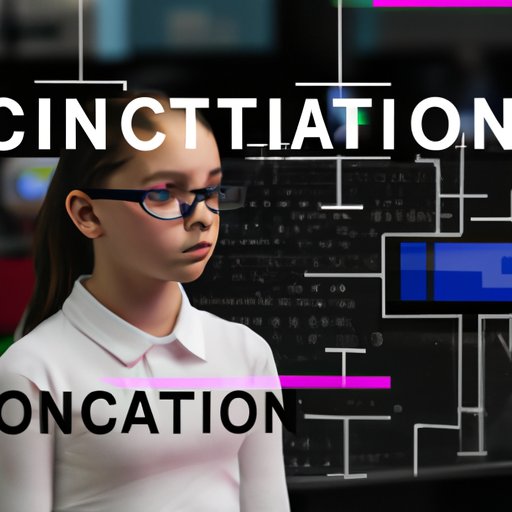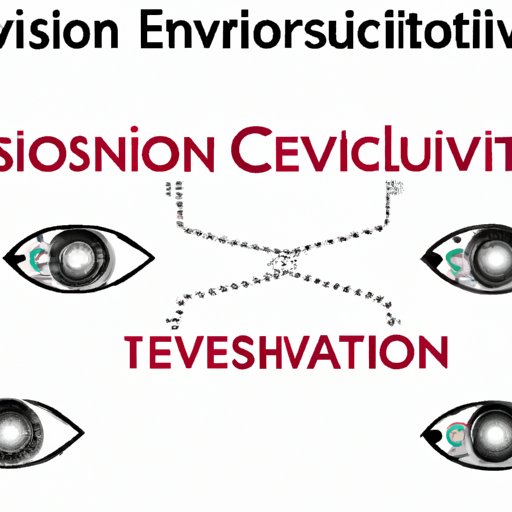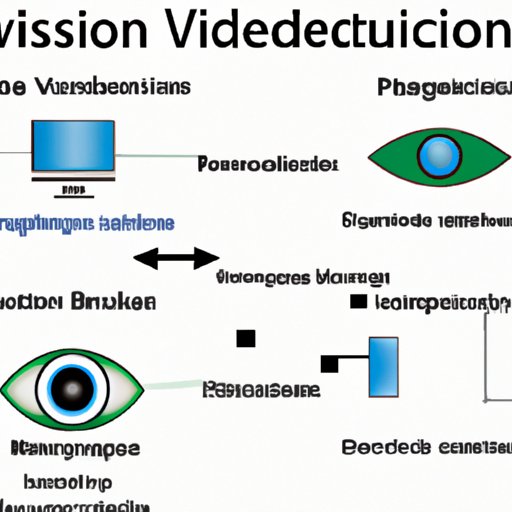Introduction
Computer vision technology is a rapidly growing field of Artificial Intelligence (AI) that enables machines to interpret and understand digital images, videos, and 3D environments. By leveraging computer vision technology, businesses are able to automate complex processes and make more informed decisions. In this article, we will explore what computer vision technology is, its different types, and how companies are leveraging it to improve their products and operations.

Exploring the Basics of Computer Vision Technology
What is Computer Vision? Computer vision is the science of using computers to interpret and analyze digital images and videos. It involves a combination of image processing, machine learning, and deep learning algorithms to identify objects, recognize patterns, and classify images. By analyzing visual data, computer vision systems can extract valuable insights from images and videos, making them useful for a wide range of applications.
Different Types of Computer Vision Technologies. There are several different types of computer vision technologies, each with its own unique set of capabilities. The most common types of computer vision technologies include image recognition, object detection, facial recognition, and scene understanding.
How Does Computer Vision Work? Computer vision works by extracting features from an image or video, such as edges, shapes, and colors, and then using these features to identify objects and classify images. For example, a computer vision system might be trained to identify cars in an image by recognizing the shape of a car or the color of its paint. Similarly, a computer vision system could be trained to recognize faces by looking for certain features, such as eyes, noses, and mouths.
The Benefits and Challenges of Implementing Computer Vision Technology
Benefits of Using Computer Vision Technology. Computer vision technology offers numerous benefits for businesses, including improved efficiency, increased accuracy, and reduced costs. By automating tedious manual tasks, computer vision systems can save businesses time and money, while allowing them to focus on more important tasks. Additionally, computer vision systems can provide more accurate results than humans, making them ideal for applications where accuracy is paramount.
Challenges of Implementing Computer Vision Technology. While computer vision systems offer many advantages, there are also some challenges associated with implementing them. For example, computer vision systems require large amounts of training data in order to accurately identify objects and classify images. Additionally, computer vision systems tend to be computationally intensive, meaning they require powerful hardware and software to run effectively.
A Look at Real-World Applications of Computer Vision Technology
Automotive Industry. Computer vision technology is playing an increasingly important role in the automotive industry. Automakers are using computer vision systems to improve safety, reduce emissions, and optimize performance. For example, computer vision systems are being used to detect lane lines, identify obstacles in the road, and even monitor driver behavior.
Healthcare Industry. Computer vision systems are being used in the healthcare industry to diagnose diseases, detect anomalies, and monitor patient health. For example, computer vision systems can be used to detect tumors in medical scans, or to identify signs of disease in patient data.
Retail Industry. Computer vision systems are being used in the retail industry to improve customer experience and increase security. For example, computer vision systems can be used to track customers in stores, identify potential shoplifters, and recommend products based on previous purchases.
Manufacturing Industry. Computer vision systems are being used in the manufacturing industry to improve quality control and reduce waste. For example, computer vision systems can be used to inspect products for defects, or to detect faulty parts in production lines.

How Companies are Leveraging Computer Vision Technology to Improve Their Products
Enhancing Quality Control. Computer vision systems can be used to inspect products for defects, ensuring that only the highest quality products reach the customer. By leveraging computer vision technology, companies can reduce their product returns and increase customer satisfaction.
Increasing Efficiency. Computer vision systems can automate tedious manual tasks, such as sorting items or counting inventory. By freeing up employees to focus on more important tasks, companies can increase productivity and reduce labor costs.
Improving Safety. Computer vision systems can be used to monitor hazardous environments, identify potential hazards, and alert workers when necessary. By leveraging computer vision technology, companies can reduce accidents and ensure a safe working environment.

An Overview of the Different Types of Computer Vision Technologies
Image Recognition. Image recognition is a type of computer vision technology that uses deep learning algorithms to identify objects in images. For example, a computer vision system might be trained to recognize cats in an image by looking for certain features, such as fur or eyes.
Object Detection. Object detection is a type of computer vision technology that uses deep learning algorithms to identify objects in an image or video. For example, a computer vision system might be trained to detect pedestrians in a video by looking for certain features, such as clothing or body shape.
Facial Recognition. Facial recognition is a type of computer vision technology that uses deep learning algorithms to identify people in an image or video. For example, a computer vision system might be trained to recognize a person’s face by looking for certain features, such as eyes, nose, and mouth.
Scene Understanding. Scene understanding is a type of computer vision technology that uses deep learning algorithms to interpret the context of an image or video. For example, a computer vision system might be trained to recognize a beach in an image by looking for certain features, such as sand, water, and palm trees.
Examining the Impact of Computer Vision Technology on Businesses
Increased Productivity. Computer vision systems can automate tedious manual tasks, freeing up employees to focus on more important tasks. By leveraging computer vision technology, companies can increase productivity and reduce labor costs.
Improved Efficiency. Computer vision systems can be used to inspect products for defects, ensuring that only the highest quality products reach the customer. Additionally, computer vision systems can be used to track customer movements, identify potential shoplifters, and recommend products based on previous purchases.
Reduced Costs. Computer vision systems can reduce costs by automating tedious manual tasks and providing more accurate results than humans. Additionally, computer vision systems can help companies reduce waste and increase efficiency, leading to further savings.
An In-Depth Look at the Future of Computer Vision Technology
Autonomous Vehicles. Autonomous vehicles are cars, trucks, and other vehicles that use computer vision technology to navigate roads without human intervention. By leveraging computer vision technology, autonomous vehicles can detect obstacles in the road, identify traffic signs, and recognize lane lines.
Smart Homes. Smart homes are homes that use computer vision technology to detect movement, recognize faces, and respond to voice commands. By leveraging computer vision technology, smart homes can provide enhanced security, convenience, and comfort.
Augmented Reality. Augmented reality (AR) is a type of computer vision technology that overlays digital images onto the physical world. By leveraging computer vision technology, AR can be used to enhance gaming experiences, provide navigation directions, and even assist with medical procedures.
Conclusion
Computer vision technology is revolutionizing the way businesses operate. By leveraging computer vision technology, businesses are able to automate complex processes and make more informed decisions. From autonomous vehicles to augmented reality, computer vision technology is being used in a wide range of applications, and its impact on businesses is likely to grow in the years to come.
(Note: Is this article not meeting your expectations? Do you have knowledge or insights to share? Unlock new opportunities and expand your reach by joining our authors team. Click Registration to join us and share your expertise with our readers.)
